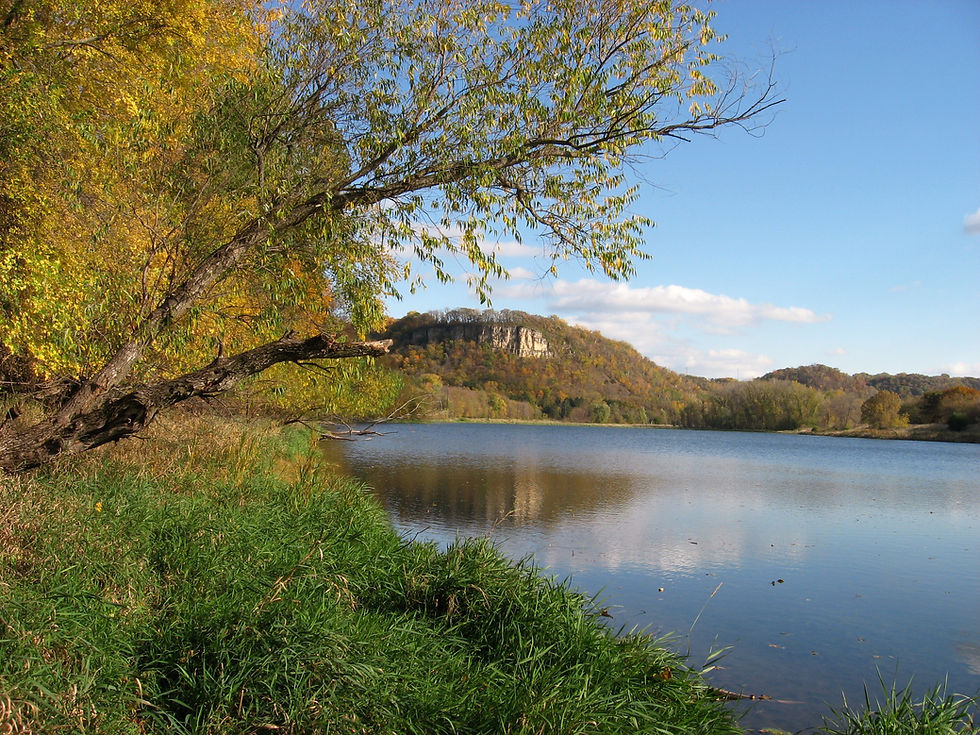Sliding into Fall
- Bruce Ause
- Sep 23, 2017
- 2 min read

New England Asters
As we encountered the fall equinox this past Friday, There is further evidence along the Rattlesnake Bluff Trail that fall has finally arrived. The New England Aster, a robust hairy aster with deep purple flower heads is showing up in numerous locations along the trail. The fall of 2017 is the first that so many of these prairie flowers have been observed since the planting was done several years ago. This is further evidence that seeds from native prairie plants can remain dormant for many years before germinating.

Jewelweed
Another colorful wildflower that has been very abundant along wood sections of the trail the past couple weeks is Pale Touch-Me-Not, sometimes referred to as Jewelweed. The juice from the succulent stems has long been used as an antidote for poison ivy.

Jewelweed
Droplets of dew on the leaves and flowers of this plant give the appearance of tiny jewels. Hence the name jewelweed.

Sumac and Goldenrod
Some of the earliest fall colors appearing locally are from sumac leaves and goldenrod flowers. We have two species of sumac in Wacouta, smooth and staghorn. The exterior texture and forking pattern of the branches of staghorn sumac are reminiscent of deer antlers.

Velvet Covered Antlers
By early September, antler growth of local whitetail bucks is usually complete. When this happens, bucks shed this soft velvet from the exterior of their antlers and start beefing up for the breeding season.

Red Osier Dogwood Berries
The berries of red osier dogwood provides a variation in colors along the trail. I recently learned on a visit to the Pipestone National Monument in southwestern Minnesota that the inner bark from this shrub was used by Native Americans as a traditional tobacco and smoked in their ceremonial pipes.

Sunrise From Green's Point
During the week of September 10th, we had some spectacular and colorful sunrises and sunsets due to the numerous forest fires in Montana and western Canada.

Herring and Franklin's Gulls
On recent morning canoe outings at the Head of Lake Pepin, I have observed large flocks of gulls. The most common species observed in these flocks have been Herring, Ring-billed and Franklin's gulls. Franklin's gulls are recognized by their black heads and they nest on the prairies of North Dakota and Canada.

Prairie Dawn Towboat
Early in the morning of September 18th as I was canoeing on Wacouta bay, the towboat "Prairie Dawn" and it's load of barges ran aground at the Head of Lake Pepin. One more example of a casualty of the huge sediment load that is being deposited every year in Lake Pepin. One hour later and after a considerable amount of maneuvering, they finally broke free. With the current river level at 3.3 feet, I learned later that this was the 4th barge to experience similar problems in the past 48 hours.

Feeding Gulls
As the barges finally made their way past me, it became apparent why so many gulls are being observed in this section of the river. The turbulent waters directly behind the towboat create a buffet of small dead fish. Many of these fish are shad and also prized by local eagles.




Comments